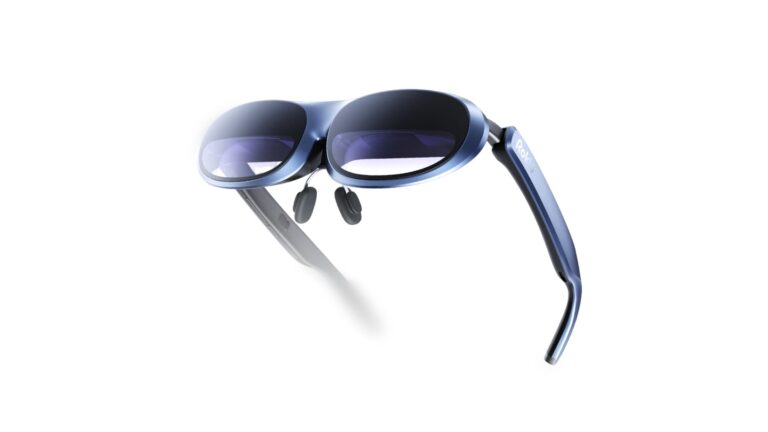
At CES in January 2023, I saw a wide range of assisted reality glasses that, like the Rokid Max, are primarily smartphone accessories, projecting the mobile phone screen, pad, or computer display onto the glasses, simulating a 200-inch screen. After shooting my mouth off in Forbes about the potential of these devices, the review units poured in until my desk started to look like the Amazon returns room. In an effort to reclaim it, I got my 24-year-old assistant to come into the office and help me. She is doubtless the target demographic for this type of HMD. Indeed, she took the Rokid Max home, where she played “Fortnite” for an hour, lying down. A far more thorough test than I would give left to my own devices.
The $399 Rokid Max is one of the best of these screen projectors, or assisted reality (AR) glasses, as opposed to Augmented Reality glasses that track head movement. We’re used to our monitors being anchored in space and then glancing at them when needed, so this takes a little getting used to. After a few minutes of use, you feel less weird about it, but it would be better with head tracking. Also, no one is going to be fooled into thinking you’re wearing regular sunglasses, but does that matter? You’re not wearing an obvious box like the Quest 2 on your face, and you can see what’s going on around you.
At 75 grams, the Rokid Max may be the lightest in the category. You should be able to wear it for hours. When you need to do something else you can just push them up on your forehead. We didn’t walk much wearing them. That seemed unsafe because of one of the best things about Rokid Max: it fills the screen.
On the wings of the glasses, you’ll find both volume and dimming controls. As there is no practical way to use these while wearing regular eyeglasses, Rokid has included modest vision correction (from -6 to 0), a feature unique to the Rokid Max. There are switchable nose pieces to help customize the fit. Rokid also offers a dedicated app that enables further customization, like syncing controllers. The app offers an “AR Space” that lets you use the phone as a mouse-like pointer in sync with the headset. The AR mode basically turns the phone into a controller.
Rokid offers a $100 accessory for the Max, Rokid Station, which comes with a remote and its own Wi-Fi box the size of a smartphone, which connects to the headset via USB-C. It has a remote control. The remote control is exactly like that of any TV. No instructions required. Like everything on the Rokid Max, it just works.
iPhone connects with an adaptor but is limited to being a straight-up projector. We have some questions about durability. During the test, the tiny pads fell off the out-of-the-box nose piece. As far as vision correction goes, your mileage may vary. The case is cheap. The zipper broke the first time we tried it. Given the insanely low cost and excellent optics, this is no surprise. Clearly, trade-offs were made to keep the price low. Bottom line: the Rokid Max is one of the best in a promising new category of assisted reality smart glasses.
 Charlie Fink is the author of the AR-enabled books “Metaverse,” (2017) and “Convergence” (2019). In the early 90s, Fink was EVP & COO of VR pioneer Virtual World Entertainment. He teaches at Chapman University in Orange, CA.
Charlie Fink is the author of the AR-enabled books “Metaverse,” (2017) and “Convergence” (2019). In the early 90s, Fink was EVP & COO of VR pioneer Virtual World Entertainment. He teaches at Chapman University in Orange, CA.

